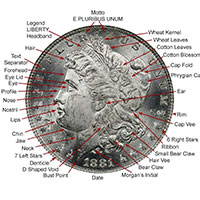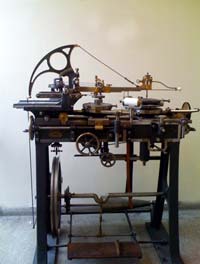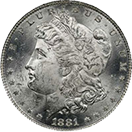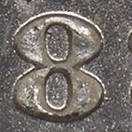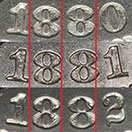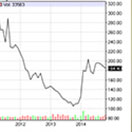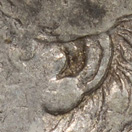

VAMs
Sources
Search
Contact
Home
VAMs
Primary Characteristics
VAMs in General
The full discussion needed to explain VAMs is beyond the scope of this web site. Our objective is the correct identification of known VAM types for the 1881-O Morgan Dollar.
A detailed discussion for all Morgan Dollars and the educational material one needs to better understand the topic can be found on the VAMworld web site. In particular their information titled Attribution 101 is the best available and should be read for more general and detailed information.
PCGS certifies only three of the identified VAMs. If you want all your coins verified then the Variety Slabbing Service (VSS) is most often your best bet. They can positively identify VAMs and put a sticker on them to verify the variety to others.
The menu on the left refers to the list of VAMs as described below. Click on any link to see our examples.
1881-O VAMs
The 92 VAMs we refer to in this site include VAM 1, or the normal state for the coin as it should be struck. A complete list of the identified VAMs include:
1 - Normal Die
1A - Spike in 8
1B1 - Die Gouge in DOLLAR
1B2 - Die Gouge in DOLLAR, Clashed Obverse n & st
1D - Pummeled "Flaky" Eye (Hit List 40 & WOW)
1F - Pitted Obverse Right Field and Eagle
1G - Die Gouges Inner Wing #1
1H - Die Gouges Inner Wing #2
1I - Clashed Obverse n & st
1J - Over-Polished Reverse
1K - Clashed n and st
2 - O/O Low
2A - O/O Low, Spike in 8
2B - O/O Low, Pitted NE-D
3 - Doubled 18-1, O Set Left
4 - Doubled 8-1
5 - O/O Right, Doubled 1 (Hit List 40)
6 - O Tilted Left
6A - Spike in 8, O Tilted Left
7 - O Set High
8 - O Tilted Right
9 - Doubled 18, Dot O
10 - O/O Top Right, Tripled/Quadrupled 18-1
11 - Spike in 8, O/O Left
12 - O/O Lower Right
13 - Doubled 8, O/O High
14 - Doubled First 8, Die Gouge DO
15 - Doubled 1
16 - Doubled 1, Over Polished Reverse
17 - Dash Under 8
18 - Doubled 18, Die Gouge in DOLLAR
19 - Doubled 1- -1 & Profile
20 - Doubled 18
21 - O/O Top Right
22 - Doubled 1- -1, O Tilted Left
23 - Doubled Profile, O Set Left
24 - Doubled Second 1
25 - O/O Right
26 - Doubled 18
26A - Doubled 18, Clashed Obverse
27 - Doubled Ear (Hot 50)
28 - Doubled Profile
29 - Doubled 18 and Stars
30 - Doubled 1- -1 & Earlobe, Reverse Legend and Motto
31 - Doubled 18
32 - Doubled 18-1, O Set Left
33 - Doubled Ear Bottom
33B - Doubled Ear, Clashed Obverse In & st and Reverse M (WOW VAM)
34 - Doubled 18
34A - Doubled 18, Pinned Wing
35 - Doubled 188, O Set Left
36 - Doubled 8-1, O Set Left and Tilted Left
37 - Doubled Reverse Legend and Motto
37A - Doubled Reverse Legend and Motto, Clashed Obverse n & us
37B - Doubled Reverse Legend and Motto, Beveled Field STAT & AM
38 - Tripled Left Wreath, Double Legend
39 - Double Phrygian Cap and UNUM
40 - Doubled Ear Inside and Bottom
41 - Doubled 1, Tripled Left Wreath, Doubled Legend
42 - Doubled Left 8, Die Gouge DOL
43 - Doubled Left 8 & Phrygian Cap, Die Gouge DOL & denticle impressions
44 - Doubled Reverse Legend, Vertical die scratch in front of eye
45 - Doubled Left 1, O Set High
46 - Doubled 18, Dot O
47 - Doubled Left 8 and Phrygian Cap
48 - O/O Lines
49 - Doubled 1- -1, Die Gouge DOL
50 - Doubled Ear Bottom
50A - Doubled Ear Bottom, Clashed Obverse n & st Reverse M
51 - Doubled 18, Tripled Left Wreath, Doubled Legend, Clashed Obverse us
52 - Doubled 18-1
53 - Doubled 18
54 - Doubled Right 1, O Set Left
56 - Doubled Right 1, Lower Right
57 - Doubled Ear Right Inside, O Set Left
58 - Doubled Left 8
59 - Doubled Reverse Legend & Motto
60 - Doubled OF AMERICA, O/O Left & Set Left
61 - Doubled 18, O Set Left
62 - Doubled Date, Ear Bottom and Upper Reverse
63 - Doubled Obverse Stars, O Tilted Left
64 - Doubled 18, Polished Forehead, O Set Left
65 - Doubled 18-1
66 - Doubled Right 1 Bottom
67 - Doubled 18 and Upper Reverse
68 - Doubled 18, O Tilted Left
69 - Doubled Profile, Cap, and Left 8, O/O Left
70 - Doubled Cap Top, UNUM, O Set Left
71 - Doubled 18-1, Legend, and Left Wreath
72 - Doubled 18, Polished Forehead
73 - Doubled 18, Scratch Eye Front, Wing Top Gouges
74 - Doubled 18
75 - Doubled 1, Tripled 8
76 - Doubled 18 Top
77 - Doubled 188
77A - Doubled 188, Displaced Field Break TAT
78
79 - Doubled Left 8, Notched Right 1
80 - Slightly Doubled Liberty Head Profilke & Cap Top
81 - Doubled Right 8, Cap Top, Profile, UNUM, Pitted Reverse
Hubs and Dies
Without going into too many details that would take much longer and much more space, understanding the basic difference and use of hubs and dies is helpful. Today the transfer of images from working models of a coin to the final die is automated with the benefit of technology that was unimaginable in 1881. It is unlikely that the Mint worker of 1881 could even grasp the processes in use today.
In the creation of dies used to stamp out coins there is a multi-stage process that starts with the creation of a relatively large working model of the coin carved by an engraver.
Through the use of a device much like a standard pantograph, the size of the working model is reduced to the size of the final coin. In 1881 this was mechanized, but with what we would consider to be a crude mechanical lathe today. The resulting product of this process is known as a master die. The master die is too precious to be used for stamping coins, so its image is transferred as a positive image to another piece of steel known as a hub.
The hub is a positive image of the final coin, but to stamp the coin you need a negative of the coin. So the hub is then stamped into another piece of steel to create a negative working die. (There are more working steps in this process, but this is the high level view.)
In the course of creating the positive and negative images there are several opportunities to introduce minor variances in the dies. Unintentional errors, doubled strikes, and other issues are possible at every stage. The result of this process is obviously seen in the struck coin.
Since the process is repeated for both the obverse and reverse of the coin you can have dies with different characteristics paired to create varieties. Another critical factor is wear. Wear can cause the replacement of a die, resulting in a different pairing. But wear can also introduce cracks, breaks, chips, rust, excess polishing and other recognizable features.
Quality control should catch all this and reject the coins. But in the New Orleans Mint apparently this was not a well executed process. The working conditions, lack of management oversight, and belief that the coins would never make it into circulation all contributed to the retention of poorly executed coins.
Please see the menu link for Hubs to gain more perspective on the 1881-O hub and sub variety specifications.
Obverse Hub
There is only one hub and one sub-variety for the obverse of the 1881-O coins.
The obverse hub is type III and the sub-variety is 2. This results in the following characteristics for the type III obverse hub:
-Thin letters in LIBERTY
-Unevenly divided rear portion of ear
-Lines in wheat leaves.
And for the sub-variety 2 the characteristics are:
-Long wheat leaf below R, close to bottom of R, with weak lines
-Short wheat leaf between wheat stalks
Reverse Hub
There is only one hub and one sub-variety for the reverse of the coins.
The reverse hub is type C and the sub-variety is 3. The type C hub has these characteristics:
-Seven tail feathers
-Slanted arrow feathers
-Round eagle's breast.
And for the sub-variety 3 the characteristics are:
-The left serif of A in AMERICA is cut down so it is further from the wing
-The bottom feather of the eagle's right wing is squared off and raised
Dies
If all the hubs and sub-varieties are the same for both the obverse and reverse, then it obviously falls to the different dies and die pairings to create the varieties in the coins that result in seventy different VAMs.
For the coin obverse there are 49 different identified dies. Those dies and the associated number of VAMs are: 1-27; 2-1; 3-2; 4-2; 5-1; 6-1; 7-2; 8-1; 9-1; 10-3; 11-1; 12-1; 13-2; 14-1; 15-2; 16-1; 17-2; 18-1; 19-1; 20-1; 21-1; 22-3; 23-2; 24-1; 25-2; 26-1; 27-1; 28-1; 29-2; 30-1; 31-1; 33-1; 34-1; 35-1; 36-2; 37-1; 38-1; 39-1; 40-1; 41-1; 42-1; 43-1; 44-1; 45-1; 46-1; 47-1.
For the coin reverse there are 19 different dies. Those dies and the associated VAMs are a-38; b-3; c-1; d-3; e-2; f-1; g-2; h-2; i-1; j-1; k-1; l-4; m-1; n-4; o-3; p-1; q-1; r-1; s-1.
Another die variety that is possible only on the reverse of the coin is the introduction of the mint mark. All Morgan Dollars could use the same obverse and reverse dies. But eventually you arrive at the point where the mint mark is introduced. The mint marks were added to the dies by hand with a stamp. This process was not exact, resulting in marks that are high, low, left, right, tilted, and double struck.
Clashed Die Varieties
Clashed coins are produced from clashed dies. A clashed die is the result of a processing error where an obverse and reverse die are brought together without a coin blank (planchet) being present. The result is two modified dies, each with a slight impression of the other remaining. Think of it as creating two new dies purely by accident and then using them to create coins.
Clashed dies often produce desirable coins, and in cases where the clash process is strong enough it will create a VAM. Usually the line of demarcation is whether or not the clash was strong enough to produce a letter transfer and not just feature outlines. Our collection includes a little of both with clashed coins that are not VAMs and some that are.
For the 1881-O series there are 8 VAMs with clashing strong enough to be recognized as a separate variety. The clashing is deemed a variety only when the clash was strong enough to produce a transfer of letters from one side of the coin to the other.
VAM Rarity
VAM rarity is difficult to determine for a number of reasons. First, although growing there just are not that many collectors who delve into the VAM arena. Second, PCGS only certifies 3 of the 91 known for the 1881-O. Third, VAMing a coin through PCGS is not inexpensive, especially if the coin is deemed ungradeable.
The PCGS VAM certification is a combination of cost, interest, and rarity; and there is no way to tell which side of the issue you are looking at when you see the numbers.
With a minted quantity of 5,708,000 there would seem to be plenty of all known VAMs, but are there? It is difficult to pick up an 1881-O Morgan that is not a VAM of some variety.
As with all silver coins there is the issue of just how many are left. Every time the price of silver spikes the melt buckets fill up with Morgan Dollars and some unknown quantity disappears. For VAM collectors this can be especially frustrating because coins below AU are most often in the bucket, and they are the most difficult to identify because wear erases many VAM details.
In the PCGS data the three VAMs they certify for the 1881-O have only had 147 coins submitted. That is less than 1% of the 1881-O coins graded. No 1881-O below a grade 25 has been slabbed. Even in the MS coins where VAMs are more readily identified only 4.3% of the graded coins are VAMs.
The information below was published with the permission of PCGS and can be found on their web site at PCGS.com.
Trending
For all the things that PCGS does right they get a lot of credit. But one area where they may get it wrong is in the world of VAMs.
If in all the time they have been certifying VAMs they have only slabbed a small percentage of 1881-O coins then we might ask are they really interested in the certification of these coins? This is not necessarily a criticism, just an observation.
Each year only a minor number of 1881-O coins are certified as PCGS slabbed VAM coins. PCGS does not track values for their VAMed coins, so it is not possible to know if VAMing coins through PCGS adds value other than observation through auctions.
Getting Started
Collecting The 1881-O
The 1881-O VAMs
